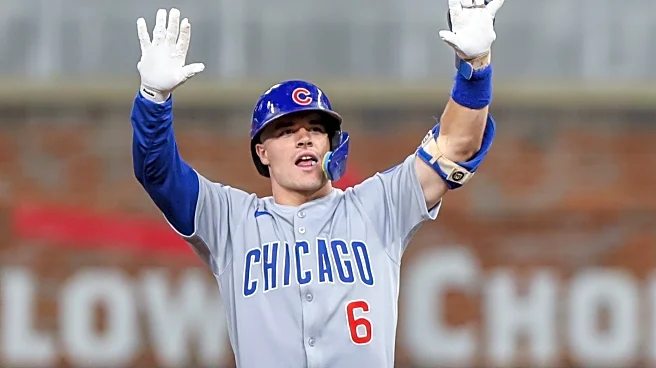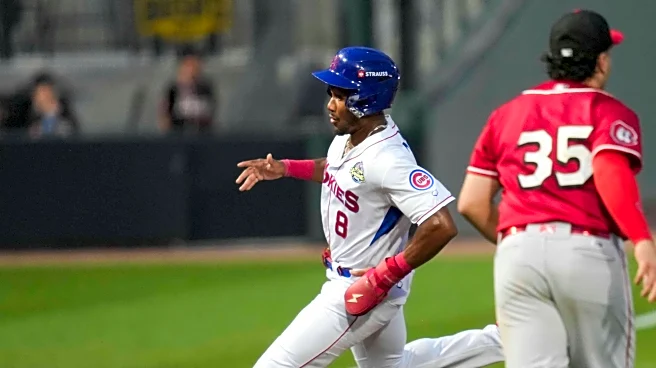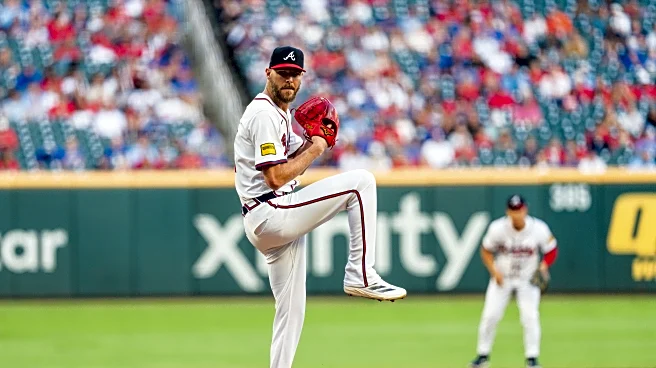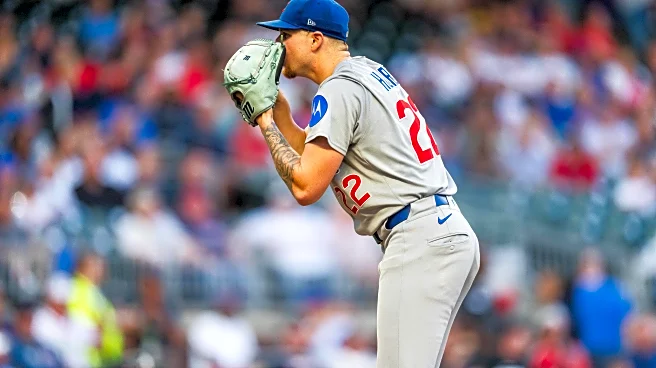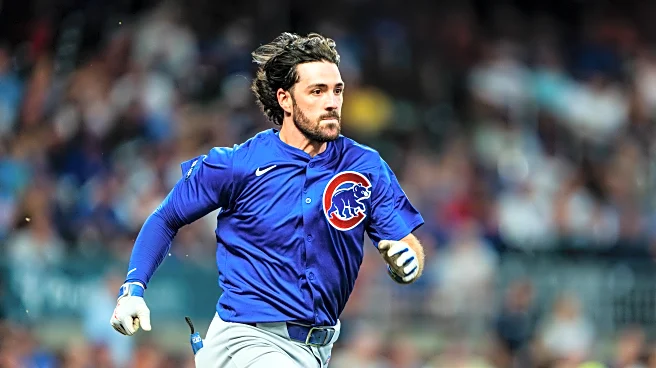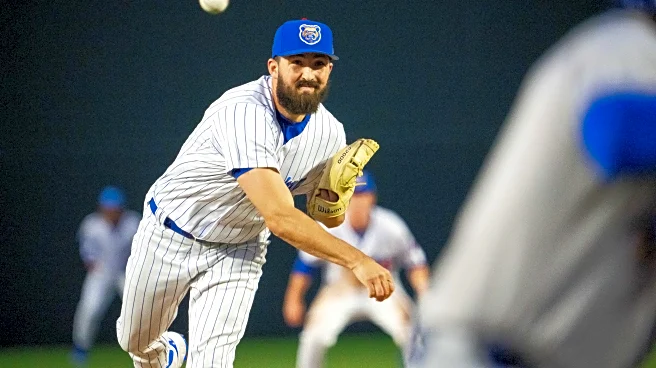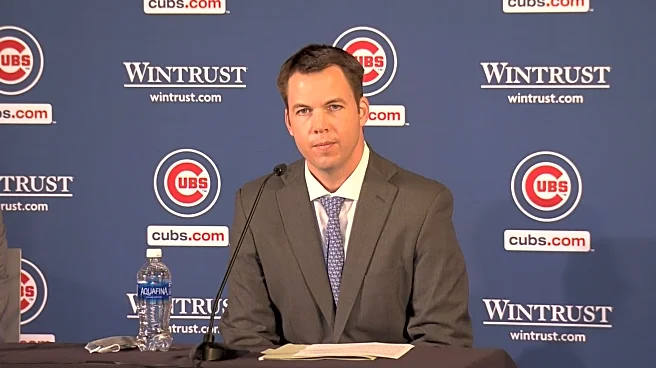What's Happening?
Jonathon Long, a first baseman for the Triple-A Iowa Cubs, has reached a significant milestone by hitting his 20th home run of the season. Long has demonstrated impressive performance metrics, including a .311 batting average, a .410 on-base percentage, and a .492 slugging percentage over 132 games. Despite his achievements, Long faces challenges in advancing to the major leagues due to a crowded roster and not being on the 40-man roster. His versatility in playing third base and left field has not yet translated into a major league opportunity, as the Cubs have established players like Michael Busch and Seiya Suzuki occupying key positions.
Why It's Important?
Long's performance highlights the depth of talent within the Cubs' organization, showcasing the potential for future contributions to the major league team. His ability to maintain a high batting average and power-hitting capabilities could be valuable assets for the Cubs, especially as they look to strengthen their lineup. However, the logjam in the roster presents a challenge for Long and other prospects, indicating the competitive nature of securing a spot in the major leagues. This situation underscores the importance of strategic roster management and player development within professional baseball organizations.
What's Next?
Given the current roster situation, Jonathon Long is likely to continue playing in Triple-A for the foreseeable future. The Cubs may need to make strategic decisions regarding their roster to accommodate emerging talents like Long. This could involve trades, position shifts, or other roster adjustments to optimize team performance. Long's continued development and performance will be crucial in determining his future opportunities with the Cubs.
Beyond the Headlines
Long's journey reflects broader themes in professional sports, such as the challenges faced by athletes in advancing their careers amidst organizational constraints. His situation highlights the importance of perseverance and adaptability for athletes striving to reach the major leagues. Additionally, it raises questions about how teams balance immediate performance needs with long-term player development strategies.



